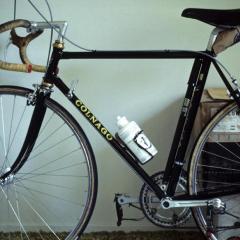How to remove the balance spring
-
Recently Browsing
- No registered users viewing this page.
-
Topics
-
Posts
-
I've never done it, however just today I was reading about it! P.24 - P.38 of this explains the truing procedure for damaged balance wheels. I have no idea if this is still the accepted way of doing it, the learning material is rather old 🤣. Hopefully one of the veterans will be along to give you an easier solution. Good luck Joseph Bulova School of Watch Making.pdf
-
Thanks for the feedback. Hopefully it won't happen again, but you never know.
-
have you ever noticed a nicely waxed car when water droplets hit they literally just run off. That's what you would have with epilam. The whole purpose is to keep the oil from spreading and if you put directly on top of the epilam it might not form a nice round ball but it has nothing to stick to which is exactly what is supposed to happen.
-
Because I often work on split-stem movements, I find it handy to have a full-length stem with a big plastic crown on hand for movements that I might see more than once. I set aside the original stem and crown during disassembly and use the "bench stem" while I'm putting things together and sorting everything out. The original stem gets lubricated and installed right at the end. In this case, that approach might not require swapping in and out an extender on the original stem if a long stock stem would give enough clearance.
-









Recommended Posts
Join the conversation
You can post now and register later. If you have an account, sign in now to post with your account.
Note: Your post will require moderator approval before it will be visible.